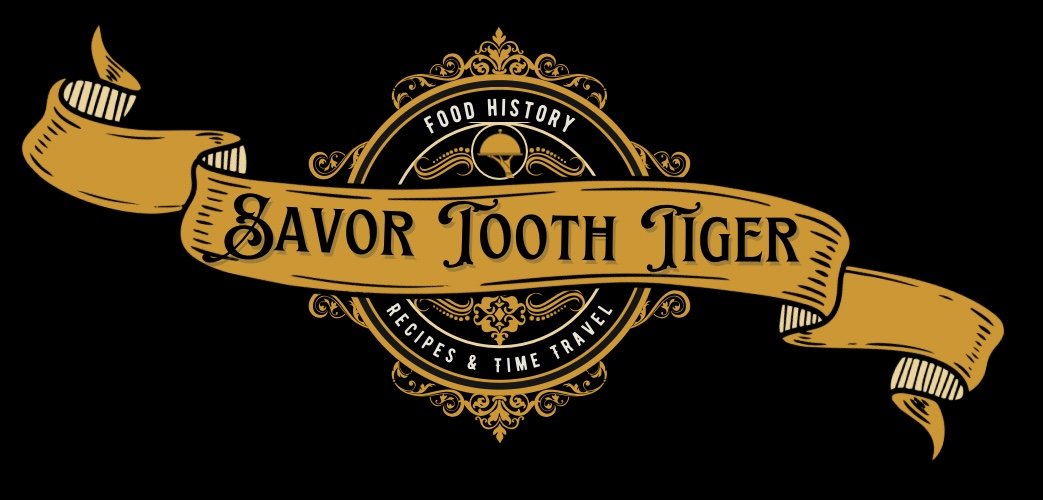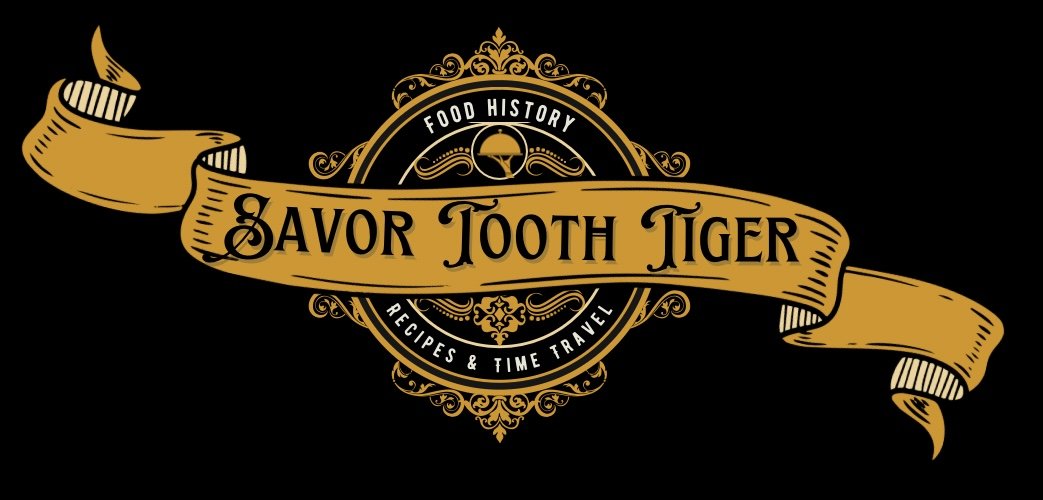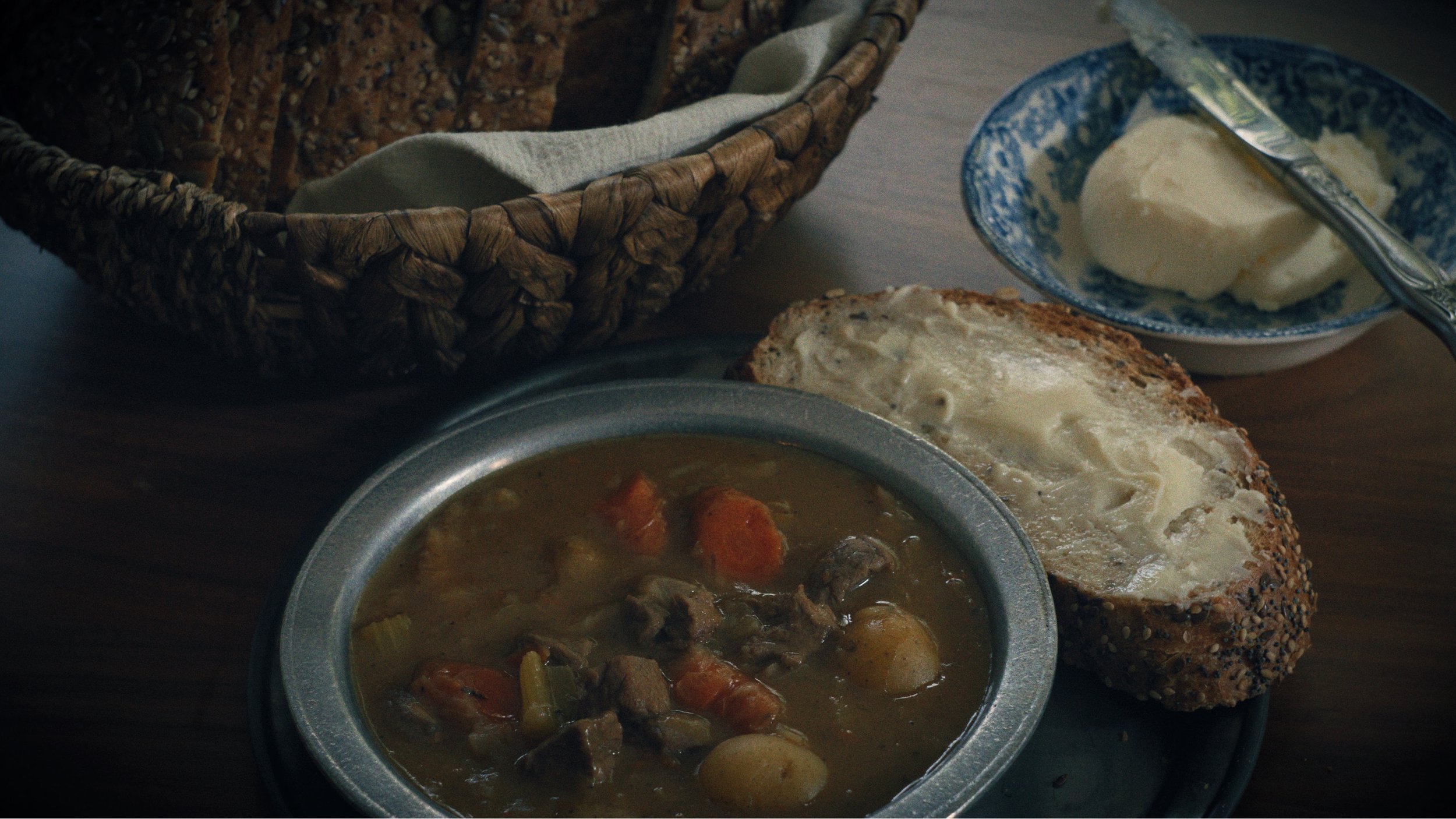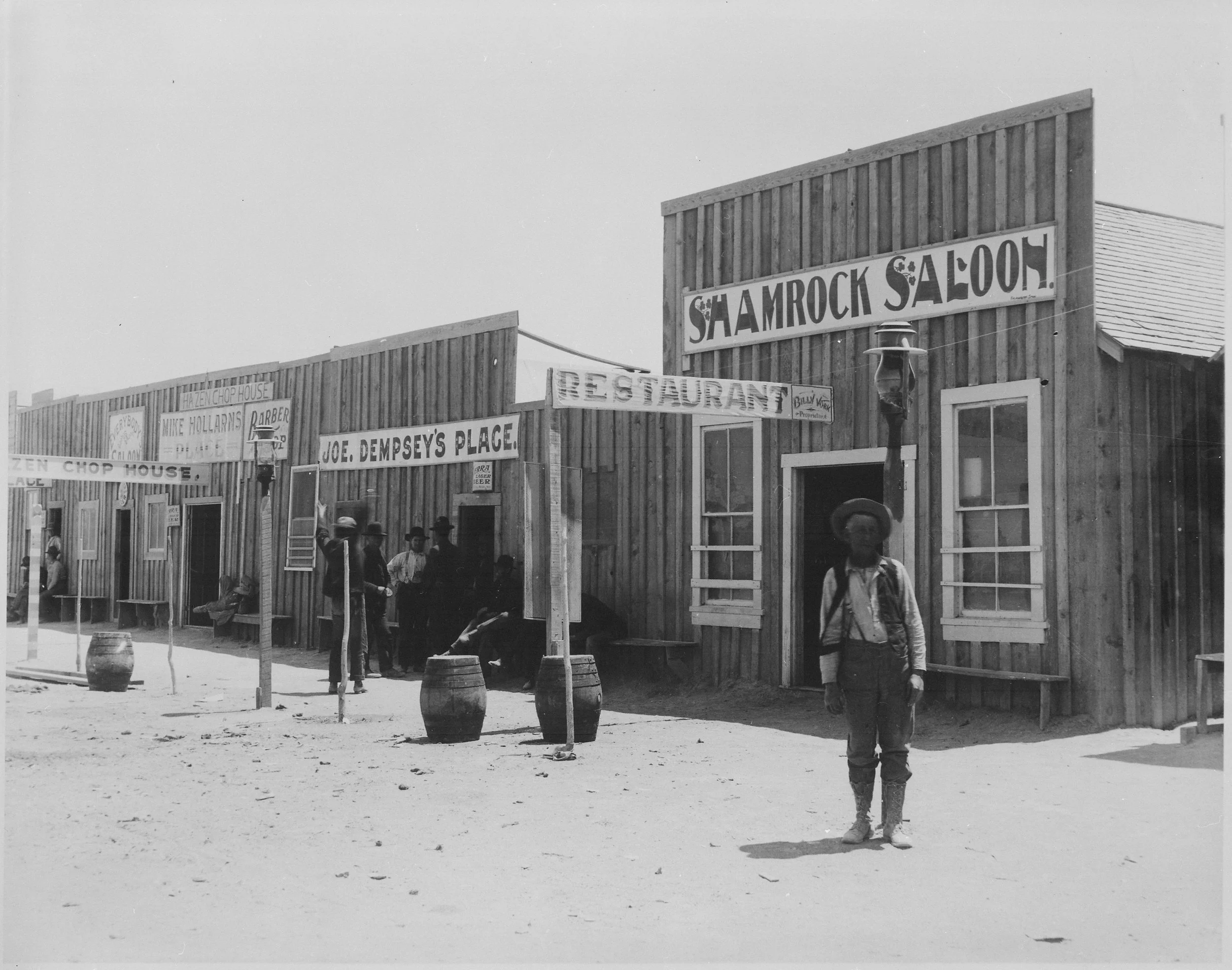Wild West
We’re going back to the old western frontier of the 19th century to cook a meal in the Wild West! After the arduous journey over the Oregon trail, Pioneers settled into their new homes in the west. This video tells the stories of outlaws, cowboys, native Americans, homesteaders, and gold miners. We’ll discuss how Chinese railroad workers introduced Chinese food to America, what cowboys ate while driving cattle across the Great Plains and what exactly they served in Boomtown saloons.
Let’s start with A Day of Food in the Wild West:
Cowboy breakfast: Chuckwagons of the Great Plains fed cattle-driving cowboys while on the move. Food had to be easy, filling and transport well like canned beans, bacon and coffee. An old cowboy hangover cure was canned tomatoes.
Free saloon lunch: Saloons in Boomtowns like Deadwood and San Francisco offered free lunch to entice customers to stay and spend their money drinking. For a nickel beer, gold miners and outlaws alike could get an all you can eat lunch buffet of bread, bacon, ham, beans, sausages, potatoes, & fried fish.
Homesteader supper: Homesteaders that settled the Great Plains ate plenty of local buffalo and one pot meals like this bison stew. They planted vegetable gardens, gathered local nuts and fruit and kept cows for fresh milk & making butter.
Today, I’m going to make bison stew and churn my own butter. I created this buffalo stew recipe based on 19th century cookbooks from Eliza Leslie. Reading recipes from this century really crack me up. It was like the Wild West of cookbook writing, No rules, weird measurements. Pie recipes are next to poison antidotes, bee keeping and remedies for dysentery. The recipes I use today are very bossy, scolding the reader not to serve too much of the meat in the soup tureen because it could look quote“ slovenly & disgusting”. I’m sure these homesteaders were just happy to get the meal on the table, not concerned with the presentation. I do like the name of this soup though…and how big is a tolerable sized onion anyway?
Modern kitchens are far different than the homesteads of the old west. No running water, primitive hearths, very few cast iron stoves, limited general stores, and canning and refrigeration were still in their infancy. Early homesteaders had access to plentiful wild game like: buffalo, deer, rabbit, squirrel, turkey, bear, prairie hen and skunk. Later as buffalo were over hunted, pioneers started raising hogs, cattle, and chickens for meat and eggs. Buffalo were almost hunted to extinction in the late 19th century. Today, bison is widely available.
Many homesteaders grew their own vegetable gardens and gathered wild fruit and herbs. They made their own pickles, jams, vinegars and sauces. Challenged by scarcity, pioneer cooks made due with what they had. Every scrap was saved and used in resourceful ways. Pioneers baked vinegar pies as a substitute for lemon. When coffee ran out, they used toasted barley, bread crust or dandelion root. Pioneer cooks simmered their stews over the fire for several hours. I threw mine in the oven with a lid for 2 hours until it was tender and falling apart.
Ok, so what about in town? Many old west towns started with a saloon and ended with a school. Homesteaders went into town for supplies, entertainment and excitement. General stores offered plenty of goods from flour, salt, and cooking supplies to shoes, guns and tents, although the prices were pretty high. A single egg cost about 50 cents, which would be more than 10 dollars today.
Let’s talk about restaurants in the old west. Boarding houses, hotels and restaurants popped up in boomtowns like San Francisco, Deadwood and Tombstone. Miners, railroad workers, outlaws and homesteaders could stop in for a meal of pie, stew, biscuits, hangtown fry, and regional variations of hearty, filling food. The first real chain restaurants of the west were started by business man, Fred Harvey, whose restaurants and hotels along the Santa Fe Line were famous for their beautiful waitresses. Judy Garland even starred in a 1946 movie about these Harvey girls. They had a long list of rules to follow, a curfew and even had to promise not to marry but made great money. Harvey House restaurants solved a massive problem of notoriously terrible food along railroads of the west. Not only was food before Harvey House disgusting, there were also some pretty sinister, although clever food scams. Passengers often paid in advance for a meal at the next stop. Sneaky vendors would make the food too hot to eat in the very short stop. Some conductors were in cahoots with these vendors and would blow the train whistle early so that the passengers would be forced to jump back on for fear of being left behind . The vendors would scrape off the plates and serve it to the next unsuspecting lot.
What were Old west saloons like? In a few words I’d say Rowdy, smelly and dangerous. If you watched my video on the free bar lunch, you’ll recall the urination troughs at the base of some saloon bars. Not to mention the spittoons and collective smells of hardworking but sweaty unwashed men. Oh don’t forget the Communal mustache towels hanging on the bar to keep those epic 19th century mustaches looking sharp. The free saloon lunch was pretty elaborate in the old west. Boomtown saloons gave gold miners a place to spend their new money drinking and the food was an added perk. After the invention of the refrigerated rail car, oysters were even shipped into the west. San Francisco’s free bar lunch was legendary, offering all you can eat fried fish, spaghetti, Italian bread and beer all for a nickel! What were the cocktail options in Wild West? Room temperature Whisky. End of list. Just kidding. There were more options but beer and whiskey were most popular. Distilled spirits were the ideal drink of the Old West because they were strong and traveled well. Ice was harvested from lakes, carted & delivered by railroad throughout the United States, then stored in icehouses or caves. More info on the saloon lunch here: Free Saloon Lunch
Western women often had more freedom and could pursue exciting new careers outside the home like cowgirl, rancher, blacksmith or banker. Miriam Colt, the woman whose quote I used in my Oregon trail post about her dress burning off had a new quote once she reached the west, “I am wearing bloomer dresses now; find they are well suited to a wild life like mine. Can bound over prairies like an antelope and am not so much in danger of setting my clothes on fire while cooking.” Single women of the west were also offered the opportunity to own land for the very first time through the homestead act. The term exodusters referred to African Americans who left the south and years of slavery behind to become land owners just a few years after the civil war. The Homestead act enabled any adult citizen except married women, to claim 160 acres of unsettled plains for a bargain price.
Pioneer cooks often spent most of the day cooking or preparing food. Pioneer women milked the cows and sold butter to bring in extra income. A cookbook from 1857 suggests to churn as often as there is cream, no less than once a week. Churning this butter reminds me of my favorite book series as a little girl…Little House on the Prairie by Laura Ingles Wilder, based on her childhood. Many frontier kids helped with household chores. Boys and girls learned cooking, making soap and candles, laundry, herding cattle, spinning & weaving and churning butter. I let my son help and even with his endless toddler energy, this task took ages. But the result…well worth it. The butter was really good and we had more appreciation for it after seeing the work that went into it.
To make your own butter, add cream to a butter churn. Depending on your churn, the time will vary. In my old wooden/crock churn, it took 40 minutes of constant movement. It will turn from cream to whipped cream to butter. Once it separates, drain the butter over a colander lined with cheesecloth over a large bowl. Save the buttermilk for another recipe. Collect the butter in the cheesecloth and strain well. Rise with cold water. Salt the butter and store.
What did cowboys eat while driving cattle across the Great Plains? Plenty of beans, bacon, canned tomatoes, biscuits, hardtack and strong coffee. Cowboys worked for little money to make ranch owners rich by rounding up cattle to send north for slaughter and processing. Those Delmonicos steaks weren’t going to round up themselves. Chuckwagons fed cowboys while out on the range. Texas Longhorns were described by cowboys as 8 pounds of hamburger on 800 pounds of bone and horn. It wasn’t just cattle. Bison were being hunted down by the thousand…which was a problem for the Lakota Sioux, Cheyenne and Arapaho tribes who had been hunting buffalo on the plains for generations.
Hunters like buffalo bill bragged that he shot down 4,300 in just 1 year. Some even shot from the windows of train cars and sold the fur and hides for a high price, leaving the carcass to rot…an absolute insult to the native hunters who respectfully used each bit. By the mid 1870’s there were not enough buffalo for tribes to survive and many were forced to moving onto reservations. The reservation food rations of sugar, coffee and bacon were worlds apart from the years of plentiful buffalo, pemmican, corn and chokecherries… Although there is so much American nostalgia in the Old West, It’s important to remember that this was also the loss of many Native American lives and land.
Another marginalized group of the west, Chinese Railroad workers. The construction of the transcontinental railroad was finished in 1869. To build the longest railroad of the time, they needed many hands to get the job done. Thousands of those workers were Chinese immigrants. Chinese workers suffered extreme prejudice, were paid less, had tents instead of housing and weren’t provided food. The irony of this injustice is that the rations and water provided by the railroad companies were often tainted. Many got dysentery and suffered malnutrition. Chinese workers who cooked their own food and boiled their water for tea, were sick less often. After the railroad was completed, many Chinese immigrants settled in the west, some opening restaurants. Chop Suey and chow mein became popular, sparking an interest in Chinese food in America well into the 20th century.

Buffalo Stew
Ingredients
- 1 Pound Bison or Beef Stew Meat
- 2 onions (yellow or white-chopped)
- 4 carrots or parsnips (chopped)
- 4 ribs of celery (chopped)
- 1 pound small potatoes (halved or quartered)
- 4 cups stock or water (vegetable or beef stock)
- Salt and pepper
- 6 Tablespoons butter (divided)
- 1/2 cup all purpose flour
Instructions
- In a Dutch oven or large pot, over medium-high heat, add 2 tablespoons of butter. Add the meat and brown for about 5 minutes or until color develops. Remove the meat and set aside.
- Add the rest of the butter, add chopped vegetables. Brown the vegetables for 5 minutes until golden. Add the flour and cook for another 2-3 minutes, stirring often.
- Add the stock, stir. Using a wooden spoon, scrape up any brown bits from the bottom of the pan. Add meat back to pot along with potatoes. Cover with a lid. If using a Dutch oven, you can put in a 350 degree Fahrenheit oven for 2 hours or until completely tender. If using the stovetop method, Bring pot to a boil, then turn down to a simmer on low for 2 hours with a lid. Stir and check often. Check for tenderness and adjust seasoning of salt and pepper.
- Serve hot with bread.





